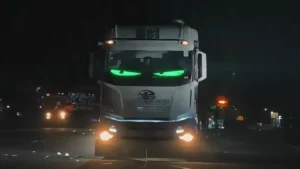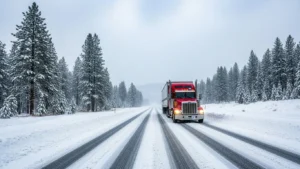The Palisades fire has turned into an insurance crisis affecting homeowners in areas vulnerable to climate disasters.
The recent fire in Pacific Palisades has highlighted the challenges faced by thousands of Los Angeles residents when it comes to insurance policy withdrawals. This tragedy has turned into an insurance crisis affecting homeowners in areas vulnerable to climate disasters.
In recent months, there has been a trend of large insurers leaving the California market, even suspending the issuance of new policies. Faced with this situation, homeowners are forced to rely on the California FAIR Plan, a last-resort solution that provides basic fire coverage in high-risk areas.

Insurance Crisis: Fire Risk Increases Migration to FAIR Plan in California
The migration to the FAIR Plan has been particularly notable in Pacific Palisades. In 2024, approximately one in every seven homes relied on this coverage, a significant increase from the 400 homes that did so in 2020. The growth in the number of homes insured by this plan reflects homeowners’ fear of the devastating wildfires that strike the region and the shortage of traditional insurance options.
The Palisades fire could become the most expensive in history due to the high cost of homes in the area, which have an average value of $3.1 million. This disaster has exacerbated an already tense situation in the California insurance market, which has seen more than 100,000 residents lose their insurance since 2019.
The situation in California reflects global challenges arising from climate change, which is reshaping not only the region’s landscape but also the economic and social dynamics of communities most affected by natural disasters. With the rise of wildfires and climate change as risk factors, the problem is expected to extend beyond California, impacting other states like Florida and Louisiana as well.

New insurance coverage regulations, the light at the end of the tunnel?
Despite everything, there is still hope. On Monday, a new regulation was announced in California that will require insurers to offer coverage in areas prone to wildfires. The goal is for homeowners to stop relying on the FAIR Plan, whose average cost is $3,200, double the typical cost.
The regulation requires insurers to increase their coverage in these high-risk areas by 5% every two years until they reach 85% of their market share. In exchange, the state will allow insurers to pass reinsurance costs on to consumers. Some opponents fear this will raise premiums by 40% and question the speed of implementation. Meanwhile, here are some actions to take during the crisis that California is currently experiencing.

Insurance tips for homeowners after a fire
- Prioritize safety: residents should ensure the safety of themselves, their family, and pets.
- Contact the insurer: it’s crucial to get in touch with the insurer as soon as possible.
- Document damage: upon returning home (if possible), take photos and videos of the damage and keep a detailed log.
- Record interactions and expenses: keep a record of all interactions with the insurer and expenses incurred (accommodation, food, repairs).
- Verify contractors: if immediate repairs are made, research contractors and ensure they are properly licensed.
- Avoid scams: post-disaster scams are common, so precautions should be taken when hiring services.
- File a claim with the insurer: if the claim is not being handled properly, contact the California Department of Insurance.
- Mitigate future risks: implement measures to reduce fire risks, such as fire-resistant roofs and clearing flammable vegetation near the home.
For more insurance-related questions, call the California Department of Insurance at 800-927-4357. For more information on wildfires, visit the website www.insurance.ca.gov.

Fatigue Monitoring 2025: New Federal Changes Ahead
Federal agencies are reassessing fatigue monitoring technologies and HOS standards, signaling potential regulatory changes for the trucking industry.

A guide to “angry eyes” rules every driver should know
The recent wave of traffic stops in Wisconsin and California for trucks using green LED “angry eyes” lights has reignited a national debate: what modifications are allowed, and which ones are strictly prohibited, under U.S. trucking regulations? This angry eyes crackdown highlights a growing issue in the industry—confusion about what is actually legal on the road.

Truck drivers are at high risk of developing diabetes
About 11% of the adult population meets the criteria for prediabetes, and there is a particular group at high risk: truck drivers. Diabetes rates in

Starting in trucking: required permits, registrations, and compliance
Are you a new carrier? This is what you need to know about permits, registration, and compliance. The trucking industry can be quite challenging for

Alberta Clipper Brings an Early Polar Blast: A Critical Alert for Drivers
The Alberta Clipper is sweeping across the country with fast-moving Arctic air, sharp temperature drops, and dangerous road conditions that demand heightened attention from all professional drivers.

American manufacturers trigger truck “dumping” investigation
Foreign trailer manufacturers under investigation for alleged “dumping” in the U.S. The U.S. truck market is at the center of a trade dispute. After domestic
